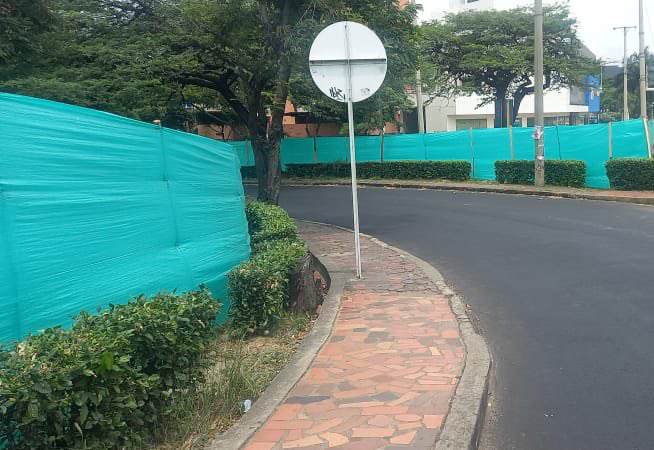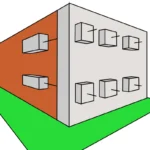What are temporary works in construction?
A fundamental topic that every civil engineering professional should be familiar with is: What are temporary works? How are they composed? And, most importantly, how are temporary and preliminary works quoted?
Temporary works in construction, also known as provisional works, are structures, installations, or elements built with the purpose of facilitating and making the execution of the main or permanent work possible. These structures have a limited lifespan, and their function is to provide the necessary conditions for carrying out the construction process efficiently and safely.
Temporary works are an essential part of the construction process and are designed to meet different needs during various stages of the main work. If you’re wondering what temporary works are, here are some examples of provisional constructions:

1. Scaffolding
These temporary structures, such as platforms or frameworks, are installed around the building or structure under construction to allow safe access for workers to different levels and work areas. The quotation for scaffolding is based on a unit of measurement per linear meter of the material used in its assembly.
2. Formwork and Shuttering
These are temporary structures that play a crucial role in the sustainability and shaping of fresh concrete until it reaches the required strength to support itself. These elements can be provided by the construction company or rented from specialized firms, and the cost will vary depending on the specific project’s needs. Generally, these can be either owned by the construction company, rented, or acquired by the project owner.
3. Site Office or Camp
A temporary building that serves as an office and storage space for construction personnel and equipment. It is essential for establishing the infrastructure to accommodate workers, supplies, machinery, and equipment during the project’s development. The quotation for the site office is done as a lump sum, depending on the dimensions and design features. It’s advisable for civil engineering professionals to use pre-fabricated and pre-priced designs.
The camp site consists of provisional structures that will serve for:
- Offices and accommodation for the contractor’s personnel and the site supervisor (engineers, technicians, and laborers).
- Dining area
- Soil, concrete, and asphalt laboratories
- Equipment repair and maintenance workshops
4. Access Roads
Temporary roads or walkways constructed to facilitate the transportation of materials and equipment to different work zones on the construction site. These roads are quoted per linear meter required for their construction.
5. Enclosures, Protections, and Fences:
Temporary elements designed to protect workers and the public in hazardous or restricted work areas.
These can be quoted either in square meters or linear meters, standardizing construction values per unit of measurement. The materials used for these structures are generally metal sheets, wood, canvas, and masonry. For canvas enclosures, it’s necessary to install posts, which can be metallic or concrete.
Since this is one of the main temporary works, the recommended personnel for this are one skilled worker with two assistants, of course, more teams can be formed in crews, depending on the professional’s discretion.
6. Temporary Warehouses
Temporary spaces intended for the secure storage of materials and equipment on the construction site. The quotation for this type of work is also done as a lump sum, and it is suggested to have pre-fabricated or pre-designed layouts that have been priced in advance to avoid delays and setbacks.
7. Temporary Service Installations
These include temporary connections for electricity, water, or drainage used during construction until permanent services are installed. The unit of measurement used for quoting is the linear meter.
8. Temporary Signage
Temporary signs and banners that help guide and warn traffic and the public in areas near the construction site.
Conclusion
These temporary works are essential to ensure a safe and efficient working environment, allowing construction teams to perform their tasks properly and meet the set project deadlines. Once the main work is completed, temporary structures and elements are usually removed and, in some cases, can be reused in future projects.
Regarding the characteristics of temporary works, it’s worth noting that these temporary buildings are expected to be quickly constructed, with simple designs and lightweight, recoverable materials. The priority is to offer safety and protection during their duration, ensuring that they remain in good condition until the work is finished.
In conclusion, a proper understanding and quotation of temporary and preliminary works are crucial aspects for achieving success in construction projects. A detailed knowledge of each type of temporary work and its characteristics will allow civil engineering professionals to plan, execute, and complete their projects successfully, meeting the highest standards of quality and safety.
About The Author
Samuel Parariá
Estudio: University of Francisco de Paula Santander.
Major: Civil Engineering.
Favorite Areas: Structures, Traffic Engineering, and Road Design.
Location: Cúcuta, Norte de Santander, Colombia.







Related
Gravity Retaining Walls
What are Anchored Retaining Walls?
Methods for Paver Calculation – Civil Engineering